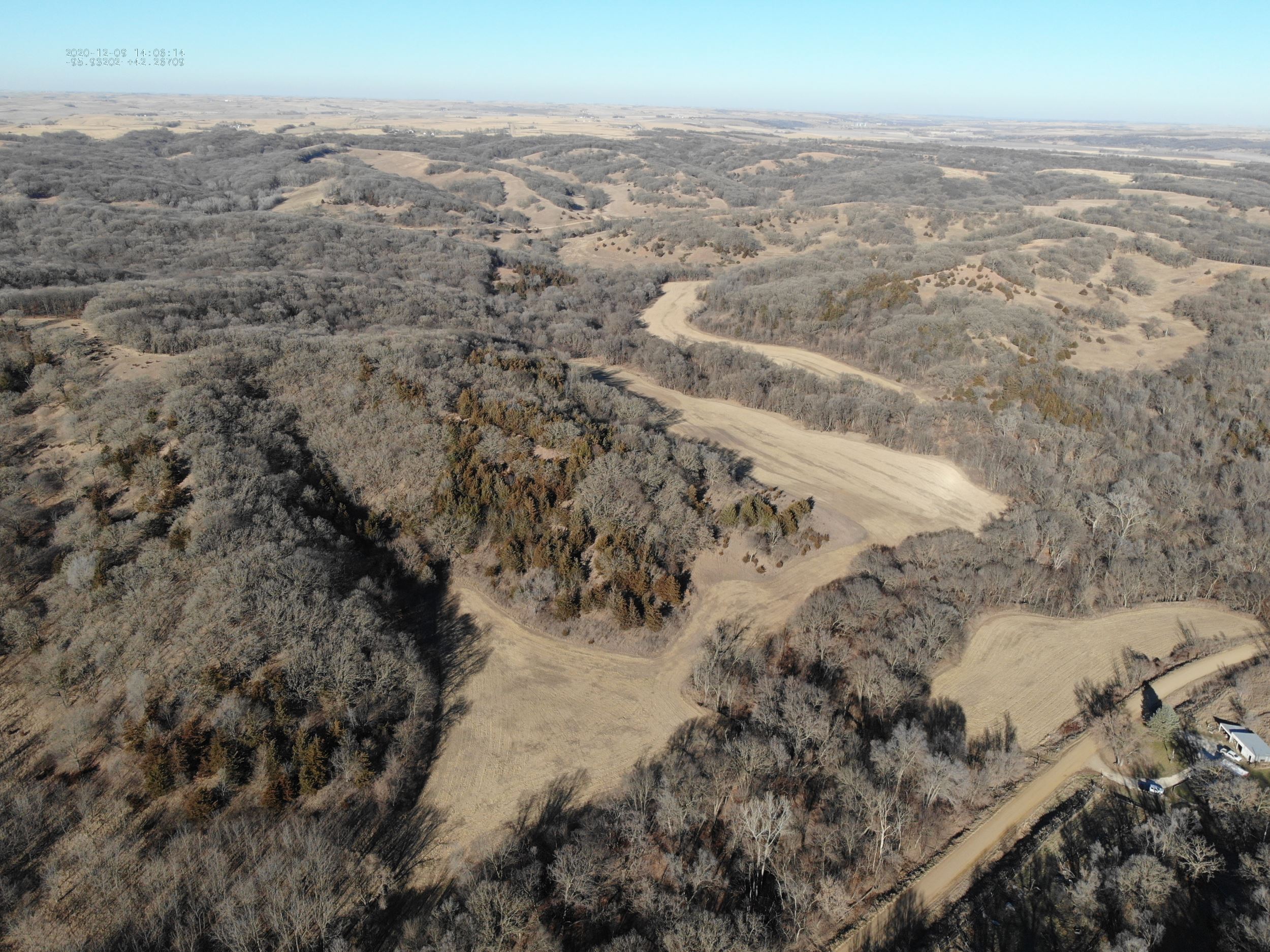Bridge Along the Ridge
By Katy Heggen on November 29, 2021 in Blog

It’s easy to lose yourself in the Loess Hills of western Iowa. The wind whipping up the ridgelines, the rhythmic rise and fall of the region’s peak-and-saddle topography, the color that cloaks these hills at golden hour. They have a way of taking ahold of people.
Many Iowans are familiar with the “front range” of this sprawling landmark, but there is much to be found beyond that first collection of ridges east of the Missouri River floodplain, including one recently expanded complex that offers some spectacular places to get lost.
Room to roam
Oak Ridge Conservation Area is a natural gem just 35 miles from Sioux City encompassing 2,401 acres of public land in the hills adjacent to the Little Sioux River Valley. With half a dozen access points spread between the towns of Oto and Smithland, there’s room to roam here, as well as a diverse range of ecosystems to explore, including remnant and reconstructed prairie, woodland and oak savanna. One mile south lies the 783-acre Southwood Recreational Area. Together, these two public lands provide a protected corridor encompassing more than 3,000 acres.
Woodbury County Conservation (WCC) first embarked on the creation of Oak Ridge more than 45 years ago, aspiring to create a large-scale complex that would protect the predominantly undeveloped area’s natural resources and provide outdoor recreation opportunities.
“[Former WCC Director of 42 years Rick Schneider and the WCC board at the time] had a vision in that area in the hills and started putting the pieces of the puzzle together,” said Director Dan Heissel, who joined WCC four years ago. “It didn’t all come together at once. It’s been a process, but has always been part of our long-range plans.”
Over the years, several separate but jointly stewarded parcels were established as land became available, each with its own unique offerings. But connecting the various units of Oak Ridge to create one large, contiguous corridor has always been the end goal.
Creating a complex of this size and scale is no easy feat. And yet, bit-by-bit, the protected parts of the preserve have inched closer together, the dream of an interconnected protected corridor increasingly within reach.
Creating connection
INHF has helped protect several additions to Oak Ridge, including an 80-acre addition in 1999, a 530-acre addition in 2000 and a 228-acre addition in 2006. But its largest and arguably most impactful contributions to the complex were two additions purchased within the past year.
In 2019, INHF assisted WCC in the purchase of an 82-acre property between units 1 and 2 near Oto. At the end of 2020, INHF successfully negotiated the purchase of the remaining 240 acres between the two units, providing the opportunity to connect them and create one large contiguous habitat. The first property, which features cool-season meadow and mixed oak woodland, transferred to WCC in June 2021. WCC is raising funds to purchase the second addition from INHF — which includes woodland, wetlands, oak savannas, prairie uplands and ridgelines — and anticipates assuming ownership of that land in spring 2022 thanks to a Resource Enhancement and Protection (REAP) Program grant.
“It’s really rewarding when we have the opportunity to help add to areas we’ve already assisted with,” said INHF Senior Land Conservation Director Heather Jobst. “When doing so helps create a contiguous complex that will have exponential benefits for the land, wildlife, and people — that’s even better.”
WCC has already began restoring the upland portions of the property, converting hundreds of acres of brome grass to native grasses, forbs and other pollinator habitat. Cedars are being removed from the property’s oak savannas to allow the understory to flourish. Prairie is taking root in areas that were formerly planted to alfalfa — a project made possible in-part through pollinator grant funding INHF helped secure from the National Fish and Wildlife Foundation (NFWF).
“[The latest addition] just has so much going for it. We’ll go in and do a little prescribed burning here and there, but really, it’s already all there” Heissel said. “With the right management, I think the native habitat is just going to jump. It’s just been waiting to come back to life.”
On their own, each addition contributes something unique to Oak Ridge, but the collective value they bring to the entire corridor cannot be understated. The same can be said of the projects’ local leaders, partners and supporters.
“We just couldn’t do it without local partnerships,” Heissel said. “When a landowner comes to the conservation board and says ‘I want to see my property go to you’ and we’re able to bring in partners like INHF, the local Pheasants Forever chapter, Iowa Pheasants Forever, Ducks Unlimited, the National Wild Turkey Federation and others, that makes things happen. Now it’s a local project being driven by local organizations and individuals.”
On the horizon
Today, more than 2,000 acres of Oak Ridge are interconnected. If and when WCC will have the opportunity to connect units three and four to units one and two remains to be seen. But, looking out over these hills, Heissel can’t help but dwell in the possibility.
“We have a lot of good relationships with landowners down there, and some have said ‘We appreciate what you’re doing, but this is going to stay in our family,’ and I understand that,” said Heissel. “But things change. Maybe someone in the next generation will want to see it become part of the complex. In the interim, we just strive to be good neighbors and remember that anything is possible.”